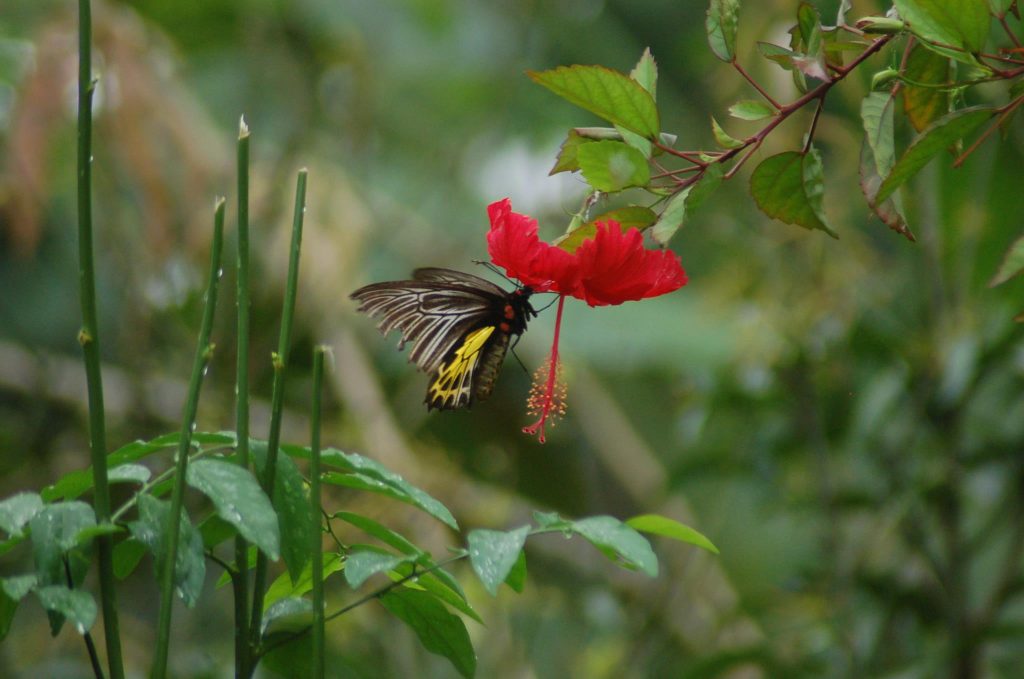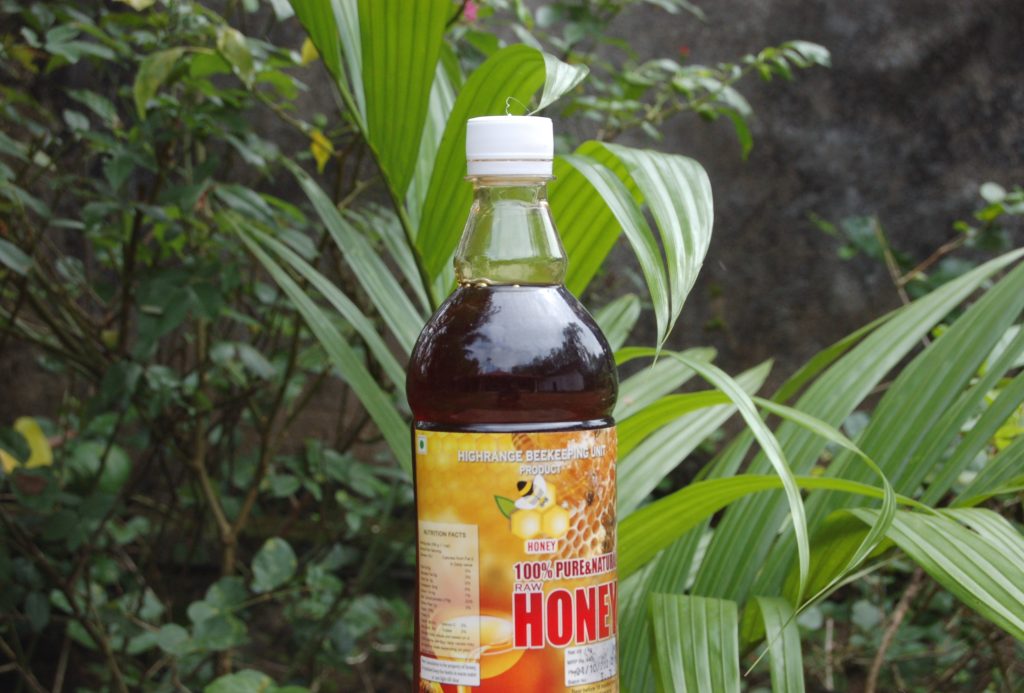By Suresh Unnithan

An ounce of honey a day can save you from infections, says Raju, an apiculture expert from the hill district of Idukki in Kerala. Raju, a farmer by tradition took to beekeeping at an early age of 12, studying in fifth standard. Now he is 55, and in full steam, popularizing his “Honey Mission” across the state.
Raju lives in a non disruptive remote village, Thoppipala, about 15 Kms from Kattappana town. With enduring efforts he has developed a “Honey Nagar” here with facilities for production, purification and promotion of this sweet viscous liquid-HONEY.
“It was accidental I took to beekeeping. It was during a summer vacation, I heard someone talking to my father about honey and bee keeping. I was just 12 years or so at that time. I was eager to have a few bee cages for myself in our farm. My intention was very simple and personal. Taste the sweet honey at my will without spending from my pocket. But as time passed I found it a better way of earning. When I learned about the curative and medicinal values of honey I decided to take up apiculture as my profession.”
Raju, as mentioned, has not confined himself to beekeeping or honey production. He has established a facility for enriching the quality of honey and producing value added products. “From experts I could learn that consumption of raw honey could sometimes lead to health issues, particularly in children. So I started purifying honey to take out impurities like pollen grains, wax and also keep the moisture and water content at desirable level.” According to medical experts raw honey may contain “harmful bacteria such as Clostridium botulinum. This is particularly dangerous for babies. Raw honey should never be given to an infant less than a year old.”
Raju has a purifying unit that can process over a ton of honey per day. Claims to process over 100 tons of raw honey a year.
Honey is not just another sweet edible food material. It has a long and credible medical history. According to a research paper published in 2017 “evidence from Stone Age paintings shows treatment of disease with bee product such as honey originated from 8000 years ago. Veda s, Koran, Bible, and Hippocrates (460–357 BC) illustrated that honey had been widely used as a drug. Qur’an vividly indicated the activity of therapeutic value of honey.” The paper further says that in ancient days “Honey was used for variety of disease conditions including eye diseases, asthma, throat infections, tuberculosis, thirst, hiccups, fatigue, dizziness, hepatitis, constipation, worm infestation, piles, eczema, healing of ulcers, and wounds in traditional medicine.”

According to the research paper there are approximately 300 types of honey. “These varieties are related to the different types of nectar that are collected by the honeybees.” The main composition of honey is carbohydrates that contribute 95–97% of its dry weight. Furthermore, “honey includes main compounds, such as proteins, vitamins, amino acids, minerals, and organic acids. Pure honey also consists of flavonoids, polyphenols, reducing compounds, alkaloids, glycosides, cardiac glycosides, anthraquinone, and volatile compounds.”
Studies have detected the approximately 600 volatile compositions in honey that contribute to its potential biomedical effects, say the research paper. “The volatile compounds of honey are generally low but include aldehydes, alcohols, hydrocarbons, ketones, acid esters, benzene and its derivatives, pyran, terpene and its derivatives, norisoprenoids, as well as sulfur, furan, and cyclic compounds. Flavonoids and polyphenols, which act as antioxidants, are two main bioactive molecules present in honey. Recent evidence has shown the presence of nearly thirty types of polyphenols in honey. The existence and levels of these polyphenols in honey can vary depending on the floral source, the climatic and geographical conditions. Some bioactive compounds, including galangin, quercetin, kaempferol, luteolin, and isorhamnetin, are present in all types of honey whereas naringenin and hesperetin are found only in specific varieties. In general, the most phenolic and flavonoid compounds in honey consist of gallic acid, syringic acid, ellagic acid, benzoic acid, cinnamic acid, chlorogenic acid, caffeic acid, isorhamnetin, ferulic acids, myricetin, chrysin, coumaric acid, apigenin, quercetin, kaempferol, hesperetin, galangin, catechin, luteolin, and naringenin. The ingredients of honey have been reported to exert antioxidant, antimicrobial, anti-inflammatory, antiproliferative, anticancer, and antimetastatic effects.”
The research papers also stress the need of purifying honey for raw honey may contain many pollutants including “some heavy metals such as lead (Pb), cadmium (Cd), and arsenic (As).”
It has been proved, “honey is a good source of antioxidants. Natural honey contains multiple plant chemicals that act as antioxidants. Some types of honey have as many antioxidants as fruits and vegetables. Antioxidants help to protect your body from cell damage due to free radicals.”
According to medical experts, “free radicals contribute to the aging process and may also contribute to the development of chronic diseases such as cancer and heart ailments.” Researches shows that antioxidant compounds in honey called polyphenols can prevent heart ailments even.”
It has been recorded that in ancient China, during the Xin dynasty of Shen Nang around 2000 BCE honey was popularly used for therapeutic purposes. “Most importantly, a book which had released during the Qin dynasty around 220 BCE encourages the use of honey on a daily basis to keep one fit and healthy.”
As Rudolf Steiner said “Nothing is better for the human being than to add the right amount of honey to his food.”


